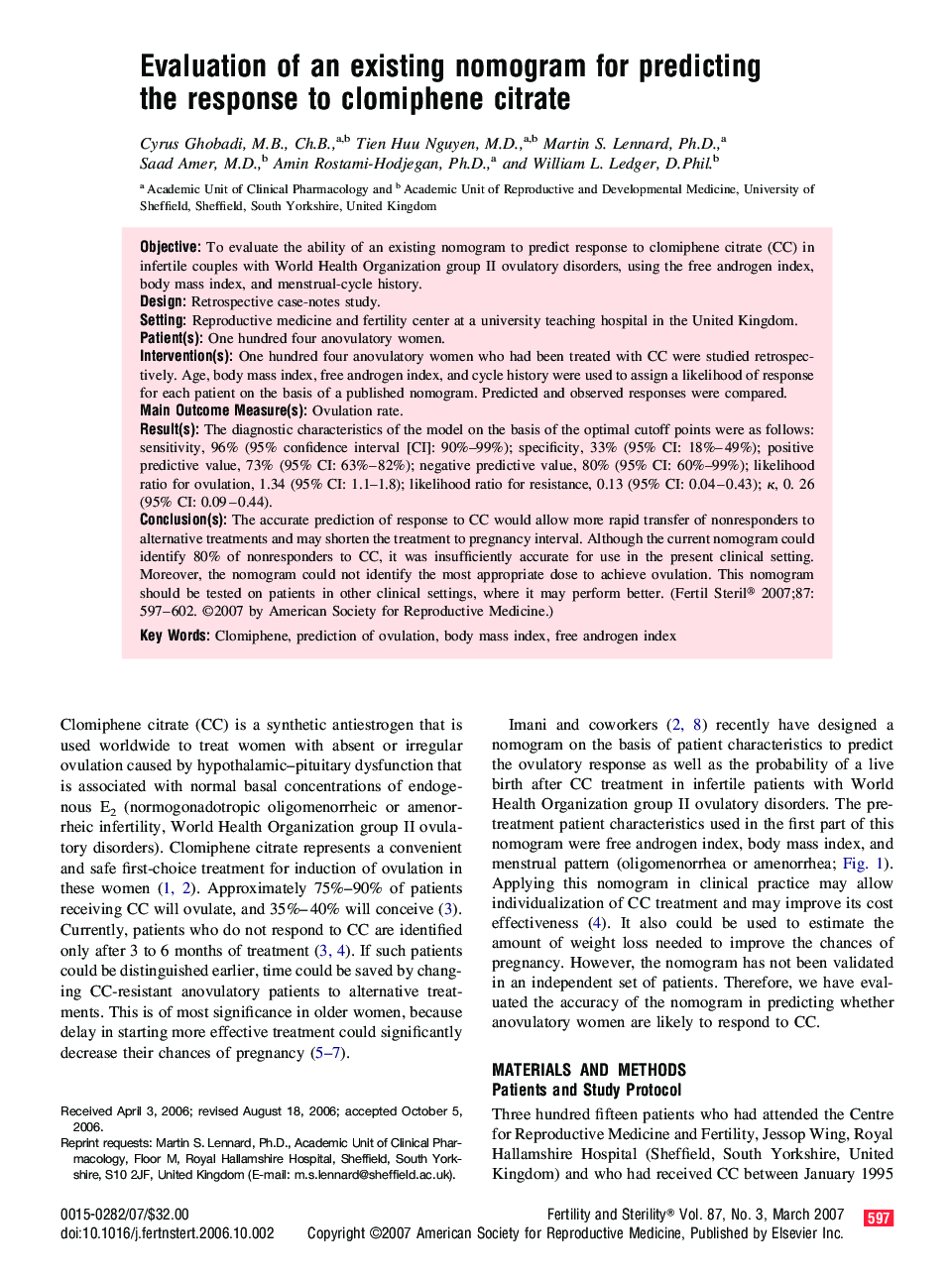| Article ID | Journal | Published Year | Pages | File Type |
|---|---|---|---|---|
| 3940149 | Fertility and Sterility | 2007 | 6 Pages |
ObjectiveTo evaluate the ability of an existing nomogram to predict response to clomiphene citrate (CC) in infertile couples with World Health Organization group II ovulatory disorders, using the free androgen index, body mass index, and menstrual-cycle history.DesignRetrospective case-notes study.SettingReproductive medicine and fertility center at a university teaching hospital in the United Kingdom.Patient(s)One hundred four anovulatory women.Intervention(s)One hundred four anovulatory women who had been treated with CC were studied retrospectively. Age, body mass index, free androgen index, and cycle history were used to assign a likelihood of response for each patient on the basis of a published nomogram. Predicted and observed responses were compared.Main Outcome Measure(s)Ovulation rate.Result(s)The diagnostic characteristics of the model on the basis of the optimal cutoff points were as follows: sensitivity, 96% (95% confidence interval [CI]: 90%–99%); specificity, 33% (95% CI: 18%–49%); positive predictive value, 73% (95% CI: 63%–82%); negative predictive value, 80% (95% CI: 60%–99%); likelihood ratio for ovulation, 1.34 (95% CI: 1.1–1.8); likelihood ratio for resistance, 0.13 (95% CI: 0.04–0.43); κ, 0. 26 (95% CI: 0.09–0.44).Conclusion(s)The accurate prediction of response to CC would allow more rapid transfer of nonresponders to alternative treatments and may shorten the treatment to pregnancy interval. Although the current nomogram could identify 80% of nonresponders to CC, it was insufficiently accurate for use in the present clinical setting. Moreover, the nomogram could not identify the most appropriate dose to achieve ovulation. This nomogram should be tested on patients in other clinical settings, where it may perform better.
